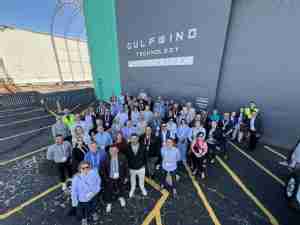BHP Billiton , Rio Tinto , and other mining companies have expanded operations to keep up with rising Chinese and Indian coal demand, overstretching the capacity of Australia's Newcastle port by almost 10 million tons on an annual basis as it battles with bad weather and congestion.
Rail capacity from mines to the port was insufficient, industry sources said, with some miners having sought more loading allocations than needed, or overestimating their ability to ship coal to the port by rail.
Coal is Australia's second biggest export earner after iron ore and rapid growth in China and India have kept global coal markets tight.
"China may have to look more to Indonesia or Vietnam if Australia cannot meet their demands," said Lawrence Li, a shipping analyst at UOB Kay Hian.
Terminal Operator Urges Cuts
The Port Waratah Coal Services (PWCS), which operates export terminals at Newcastle, has urged miners to cut coal exports from the port because it could not cope with contracted volumes.
PWCS has secured coal producer contracts for 106.7 million tonnes this year, but the company said it was only able to load around 97 million tonnes.
Reducing shipping allocations due to system bottlenecks has become a common event in recent years, industry officials said.
"The biggest problem on congestion has always been with Newcastle. This is not a recent phenomenon," said Rahul Sharan, shipping analyst at Drewry Shipping.
The port has sought special dispensation from the Australian Competition and Consumer Commission (ACCC) six times since 2004 to allow it to cut allocations to ease vessel congestion.
Another issue driving down the final exported tonnage versus contracted tonnage is that producers repeatedly overestimate coal shipping allocation needs, partly to escape gridlock.
"Companies try to get as much allocation as they can. That way if there's a problem, they can still continue to supply," said Peter Kopetz, an industry analyst with State One Stockholding, Ltd. in Perth.
Expansion Plans
Among projects approved by port authorities is a new terminal expected by the first quarter of 2011, which will slowly increase annual capacity to 163 million tons.
"Expansion plans at Newcastle will increase coal handling capacity by more than 50 percent in two years," Sharan said. "This will ease congestion problems in Australia to some extent."
Exports from Newcastle will reach 150.6 million tonnes by 2012, up from 93 million in 2009, Norwegian financial services group DnB NOR forecast last month.
A reduction in supplies from Newcastle could provide short-term support to coal prices and freight rates for dry capesize vessels, some industry experts said.
"We will see an impact on coal prices. They will go up on this," said Li.
But the market has already priced in traffic jams at Australia's biggest coal port, others in the coal industry said.
"The bottlenecks have been around for years. I think everyone's used to it," Kopetz said.
With an average waiting time between 10-15 days, more than 40 ships queue each day at Newcastle to load their coal cargo, analysts and port officials say. (Reuters)









